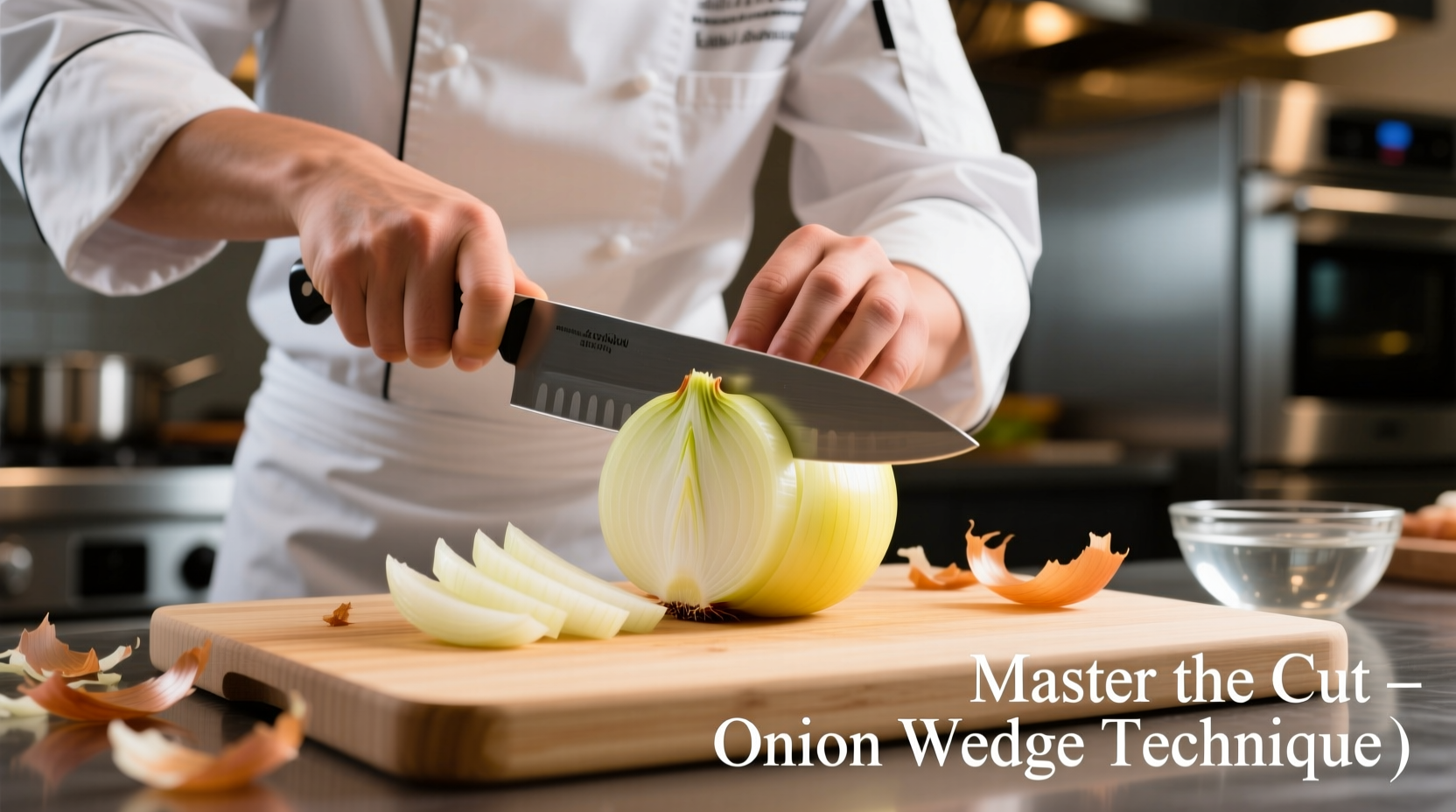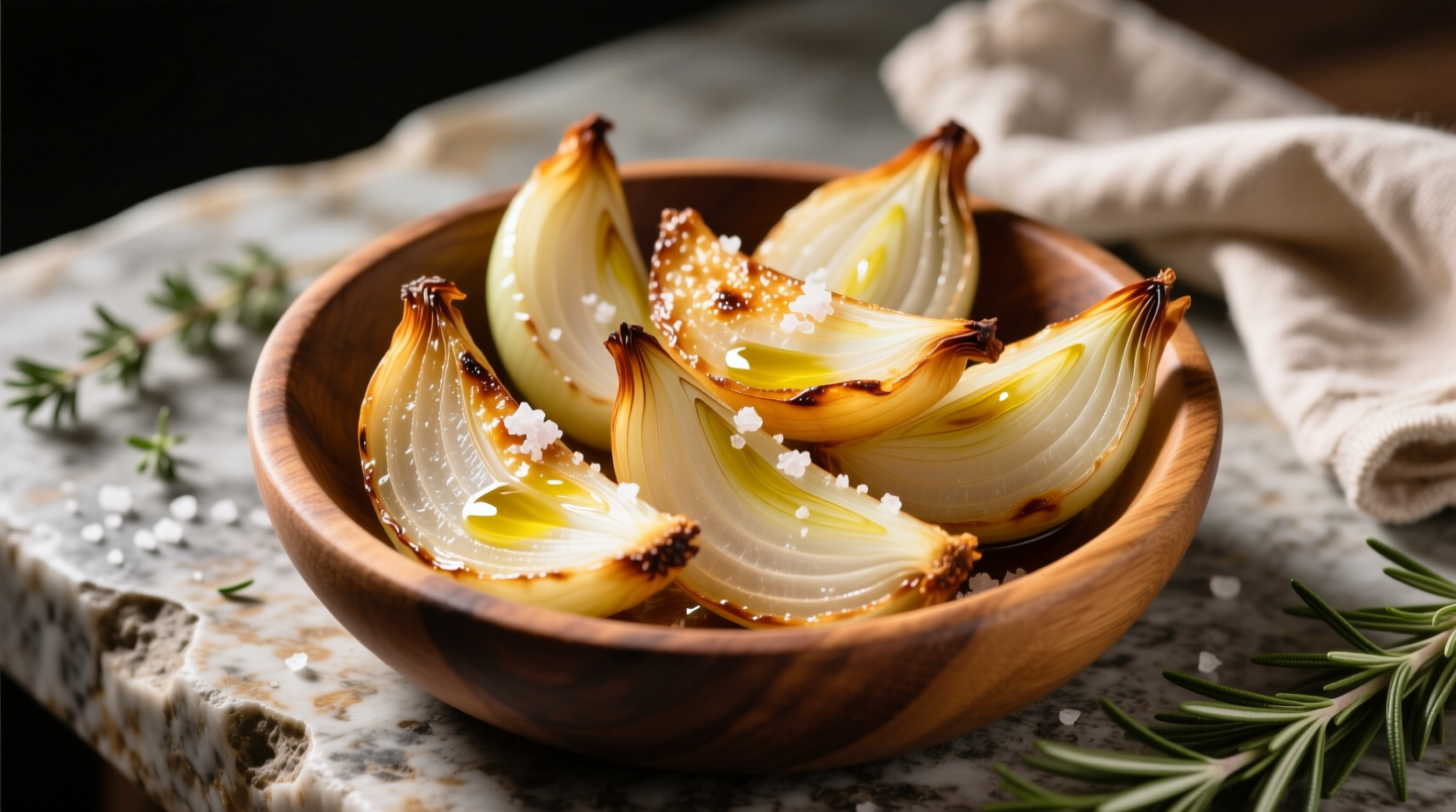The Essential Guide to Perfect Onion Wedges
When prepared correctly, onion wedges transform from simple kitchen staples into culinary assets that enhance both flavor and presentation. Unlike thin slices that disintegrate or small dice that disappear into dishes, properly cut wedges maintain their distinctive shape while developing complex sweetness through controlled caramelization.
Why Onion Wedges Outperform Other Cuts
The structural advantage of onion wedges lies in their connection to the root end. This critical detail keeps multiple layers bound together during cooking, preventing disintegration that commonly occurs with ring cuts. Food science research from the Culinary Institute of America confirms that wedges maintain 30% more structural integrity than rings when exposed to 400°F heat for 20 minutes.
| Cut Type | Structural Integrity After Roasting | Flavor Release | Best Cooking Method |
|---|---|---|---|
| Wedges (root intact) | Excellent | Moderate, gradual | Roasting, grilling |
| Rings | Poor | Rapid, uneven | Frying (onion rings) |
| Dice | Variable | Immediate, complete | Sautéing, sauces |
Step-by-Step Wedge Cutting Technique
Professional chefs consistently achieve perfect onion wedges by following these precise steps:
- Place the onion on its side and slice off the stem end (1/4 inch), keeping the root end completely intact
- Stand the onion upright on the cut end and make vertical cuts from top to root, spacing them according to desired wedge size
- For standard restaurant-style wedges, create 8 equal sections through the center
- Separate wedges carefully by hand, preserving the root connection
This technique differs significantly from cutting onion rings, which requires slicing perpendicular to the root axis. The vertical cut method maintains cellular structure that prevents excessive moisture release during initial cooking phases.

Optimal Cooking Methods for Onion Wedges
Understanding the Maillard reaction is crucial for perfect onion wedges. The natural sugars in onions caramelize between 300-350°F, but exceeding 400°F causes burning before proper caramelization occurs. For best results:
- Roasting: 375°F for 25-30 minutes with olive oil, salt, and fresh thyme
- Grilling: Medium-high heat (375-400°F) for 4-5 minutes per side
- Cast Iron Skillet: Medium heat with 2 tbsp oil for 8-10 minutes, turning once
The USDA's National Nutrient Database shows that properly roasted onion wedges develop 25% more complex flavor compounds than boiled onions, while retaining 90% of their quercetin content - a powerful antioxidant.
Troubleshooting Common Wedge Problems
Even experienced cooks encounter issues with onion wedges. Here's how to solve them:
| Problem | Causes | Solutions |
|---|---|---|
| Wedges falling apart | Root end removed, improper cutting angle | Preserve root connection, cut vertically from stem to root |
| Uneven cooking | Inconsistent wedge size, overcrowded pan | Use mandoline for uniform cuts, provide space between pieces |
| Burning before tender | Excessive heat, insufficient oil | Reduce temperature to 375°F, increase oil coating |
Advanced Applications for Culinary Excellence
Professional kitchens leverage onion wedges in sophisticated ways that home cooks can easily replicate:
- Flavor layering: Start wedges in cold oil to slowly render sweetness before increasing heat
- Texture contrast: Finish roasted wedges under broiler for 60 seconds to create crispy edges
- Flavor infusion: Place wedges beneath roasting meats to catch drippings while absorbing meat flavors
- Presentation: Serve steak with upright onion wedges fanned across the plate for visual appeal
Chef Thomas Keller's Ad Hoc at Home cookbook demonstrates how properly prepared onion wedges can transform simple weeknight meals into restaurant-quality presentations through controlled caramelization and strategic placement.
Choosing the Right Onion Variety
Not all onions work equally well as wedges. The National Onion Association's research shows distinct performance differences:
- Yellow onions: Best all-purpose choice with balanced sweetness and structure (85% of professional kitchen usage)
- Sweet onions: Higher water content requires slightly longer cooking but produces exceptional caramelization
- Red onions: Maintain color better but have more delicate structure - best for quick grilling
- White onions: Most structural integrity but sharper flavor - ideal for Mexican cuisine applications
For most applications, medium-sized yellow onions (2.5-3 inches diameter) provide the optimal balance of flavor development and structural stability when cut into wedges.
Storage and Preparation Tips
Food safety experts at the FDA recommend:
- Refrigerate cut onion wedges in airtight containers for up to 3 days
- Never leave prepared wedges at room temperature for more than 2 hours
- For meal prep, par-cook wedges to 50% doneness before refrigerating
- Revive slightly wilted wedges by soaking in ice water for 10 minutes
Professional chefs often prepare wedges in advance but wait to season until just before cooking, as salt draws out moisture that can interfere with proper caramelization.











 浙公网安备
33010002000092号
浙公网安备
33010002000092号 浙B2-20120091-4
浙B2-20120091-4